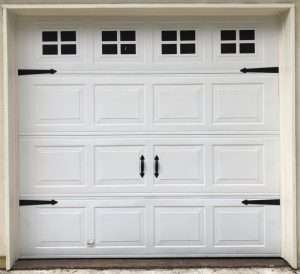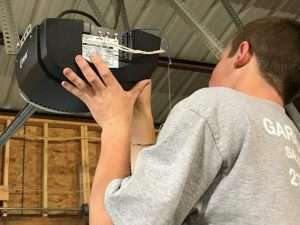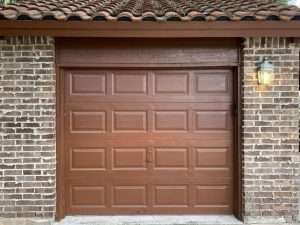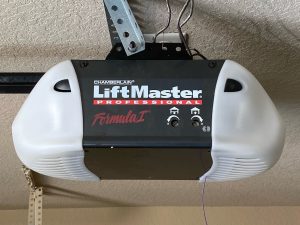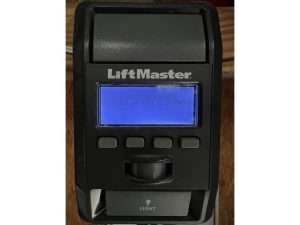How to Fix a Noisy Garage Door
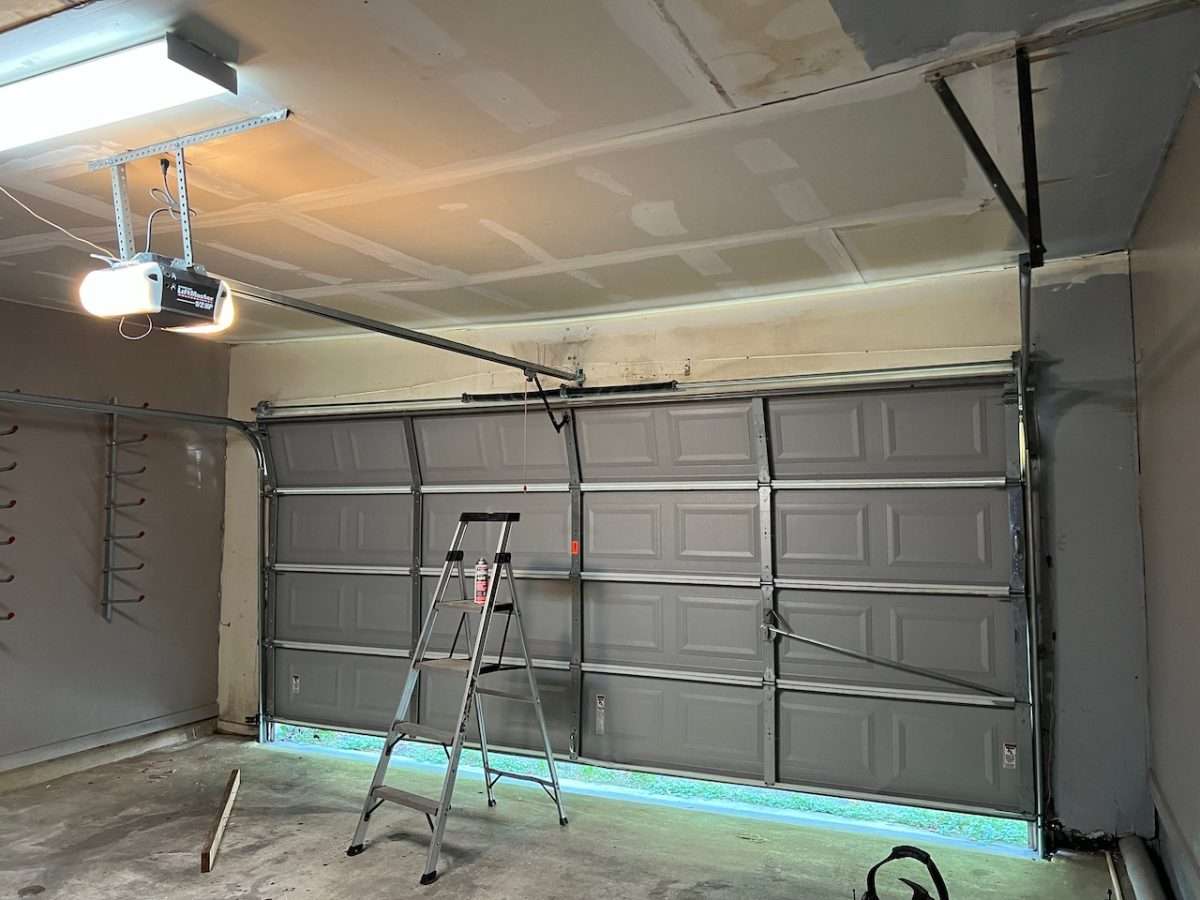
A noisy garage door is often overlooked until something breaks. Because the garage door is outside the home, most people don’t give it much thought. To address garage door noise, you first need to determine if it’s coming from the door or your automatic opener. Let’s take a look at how to fix a noisy garage door.
Garage Door Needs Lubrication
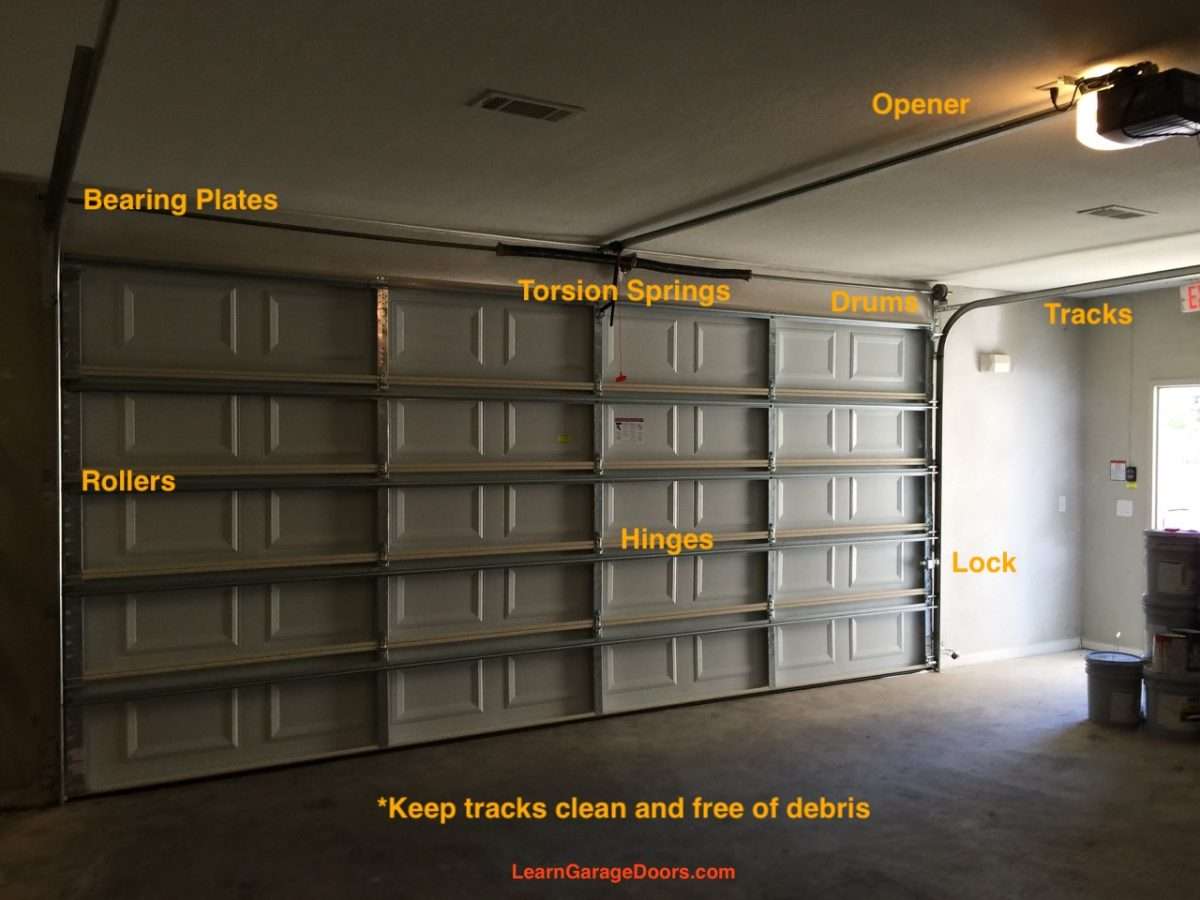
The most obvious reason why your garage door is loud is it may need some lubrication. A standard 16×7 garage door has ten rollers and fifteen hinges that move and pivot during the open and close cycles. Much of this movement is metal on metal and requires a proper garage door lubricant to ensure smooth, quiet operation. And no, WD-40 is not recommended for lubricating a garage door.
A garage door should be lubricated at least twice a year, and sometimes more often if you are in a dry, dusty climate. While doing service calls in the field, we have come across garage doors that were almost impossible to open due to lack of lubrication. After a good oil bath, a poorly running garage door can spring back to life, making for a simple fix. This is the best place to start if your door is noisy.
Noisy Garage Door Rollers
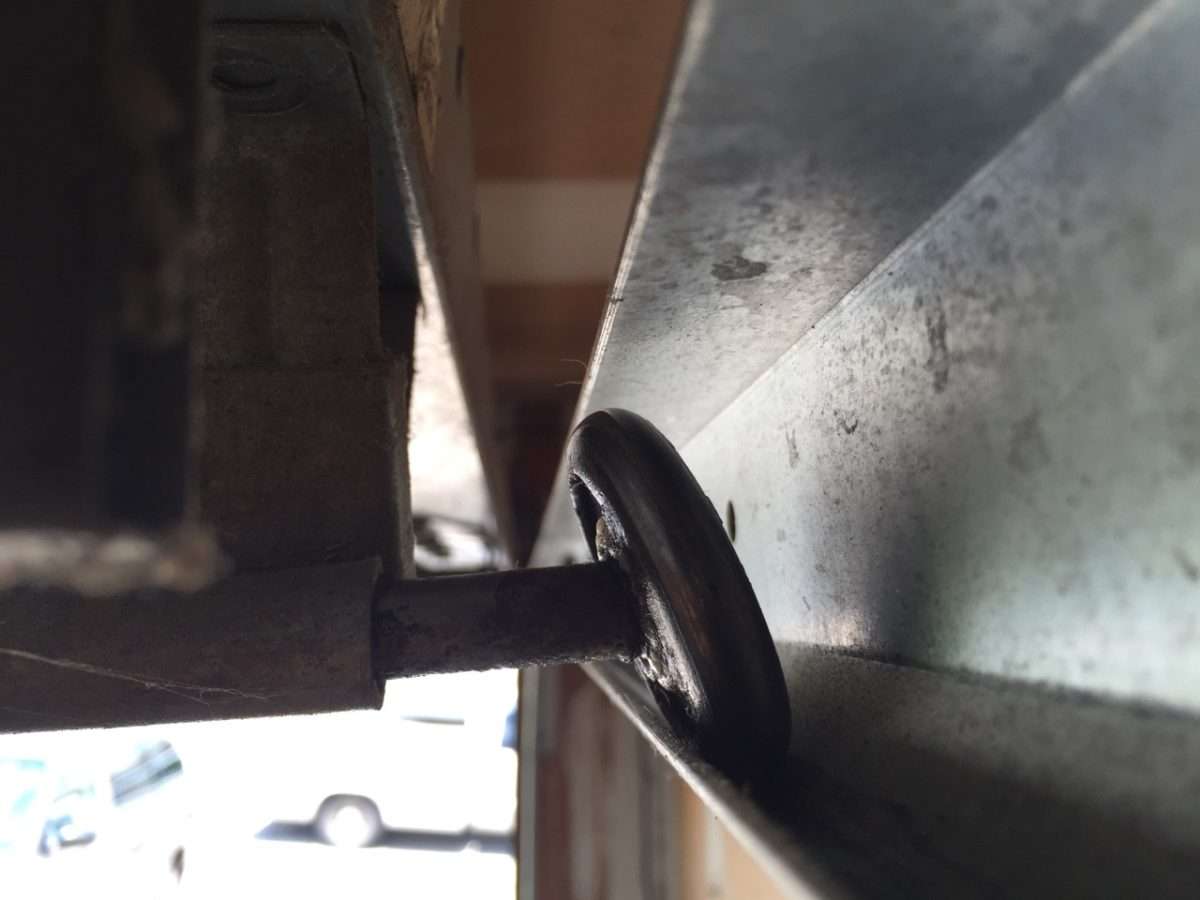
The most common reason for garage door rollers to get noisy over time is lack of lubrication. First, try lubricating the rollers where the stem meets the wheel, which is usually where the bushing or bearings are located. If your garage door rollers are making a railroad track sound like a train coming down the tracks, then most likely the bearings are damaged or have failed.
In our complete guide to garage door rollers, we go into greater detail about the different types of rollers and why they fail. Your only option is to replace your rollers if the bearings have completely failed and are no longer doing their job. Making sure you have good rollers on your garage door will go a long way in prolonging the life of your automatic opener since it won’t have to work as hard. It also helps prevent your garage door from coming off track.
Roller Shaft is Moving in Carrier
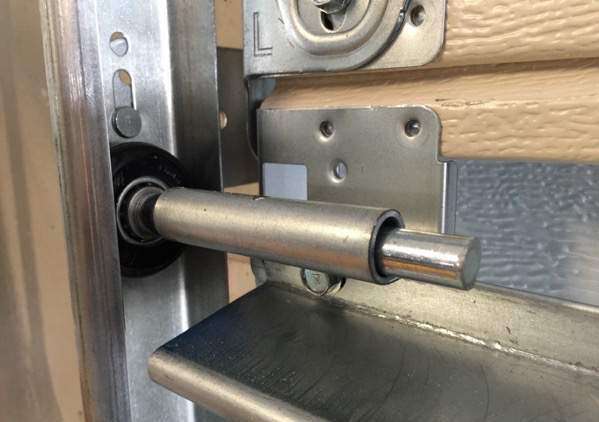
Some brands of garage doors are louder than others when it comes to how the roller shaft fits inside the roller carrier or hinge. Amarr garage doors are known for this, which is why they sell a “quiet door” option that places a sleeve over the roller stem to quiet down any metal to metal contact. I don’t understand why the supplier can’t adjust the size of the stem to eliminate having to use sleeves in the first place. This would remove play inside the roller carrier, therefore reducing noise.
Your Garage Door Has a Broken Spring

To check if your garage door has a broken spring, pull the red emergency release rope while your door is in the down position (not in the up position). This allows you to disconnect the automatic opener from the door, so you can attempt to lift the door to see how heavy it is. If the garage door is heavy, you most likely have a broken spring.
Broken or Sprung Extension Spring
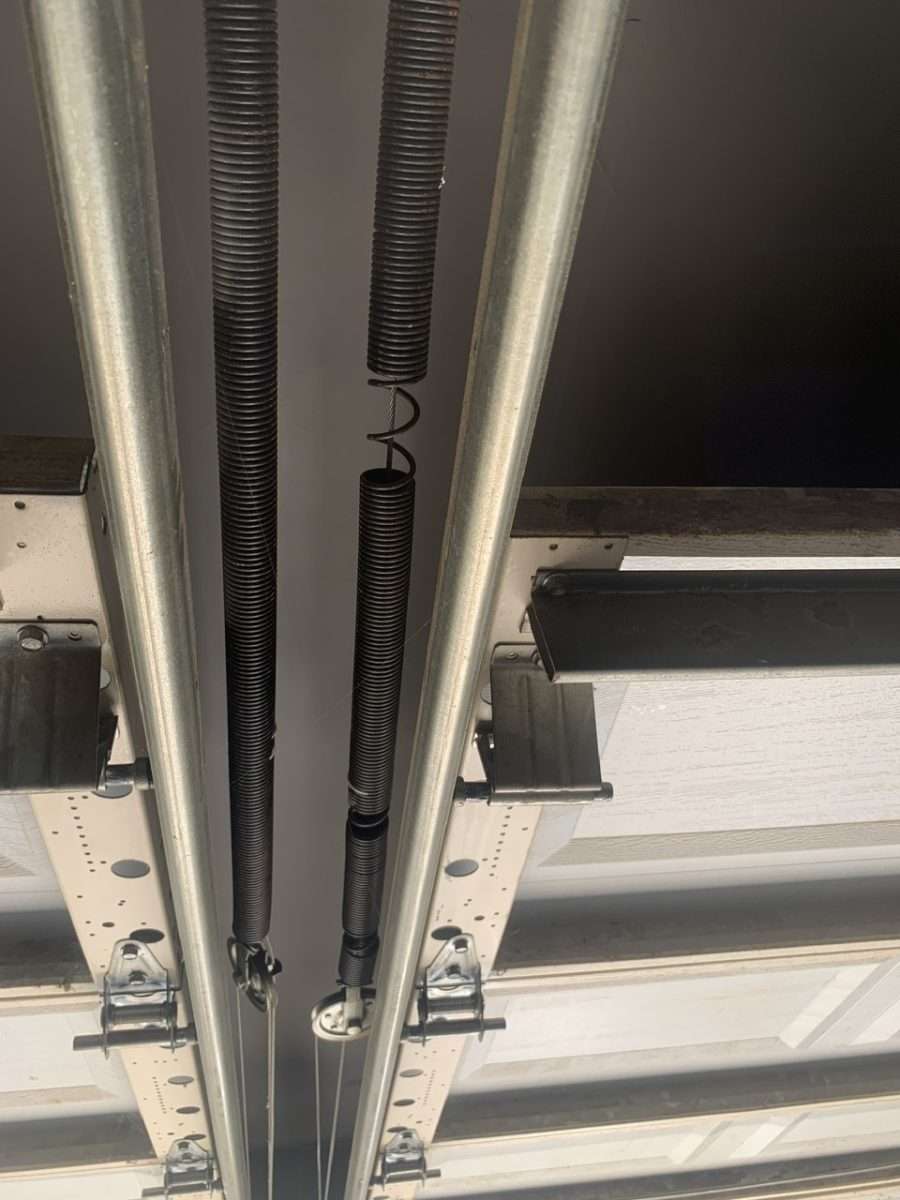
If your garage door has springs on the side that extend as your door lowers, you may have a broken or sprung extension spring. A broken spring or worn spring that is no longer pulling its weight can cause the garage door to open and close at an angle, which can be loud due to metal grinding. Visually check your extension springs to make sure they are intact and there are no gaps between the coils.
Wayne Dalton Garage Door Made Clicking Noises
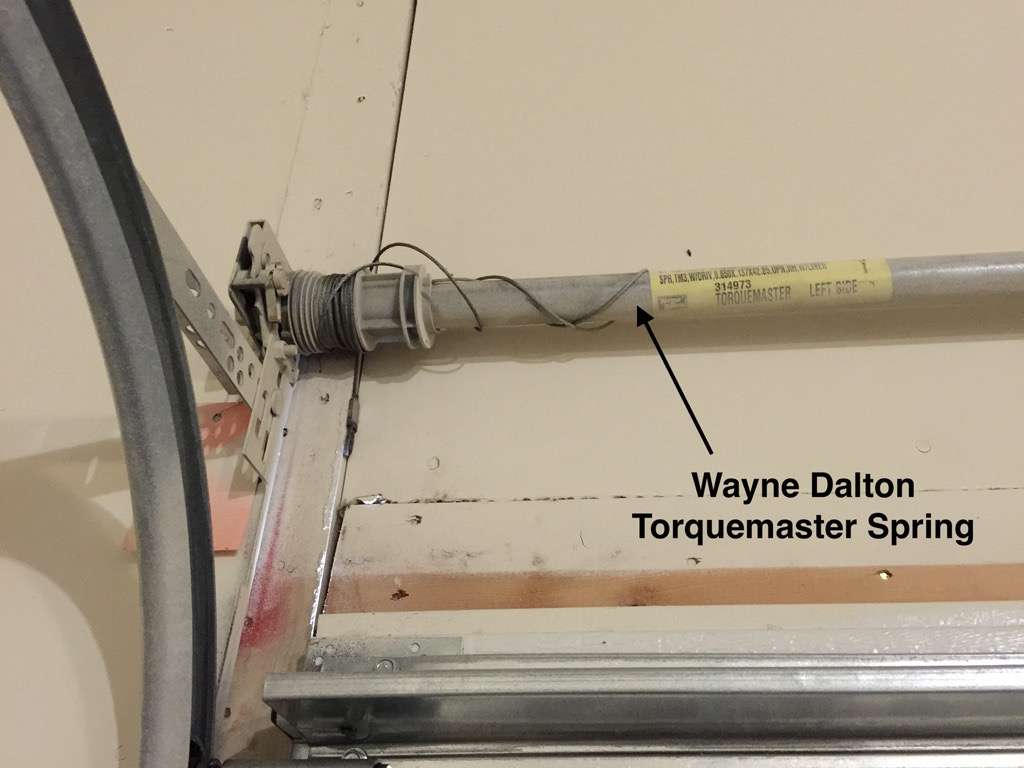
If you have a Wayne Dalton garage door with a Torquemaster Tube mounted above the door, you may have a broken spring inside the tube. The Wayne Dalton Torquemaster system will make a clicking noise when the door goes up, and then it will lock itself in the up position. This is very common as hundreds of Wayne Dalton doors are installed daily for home builders.
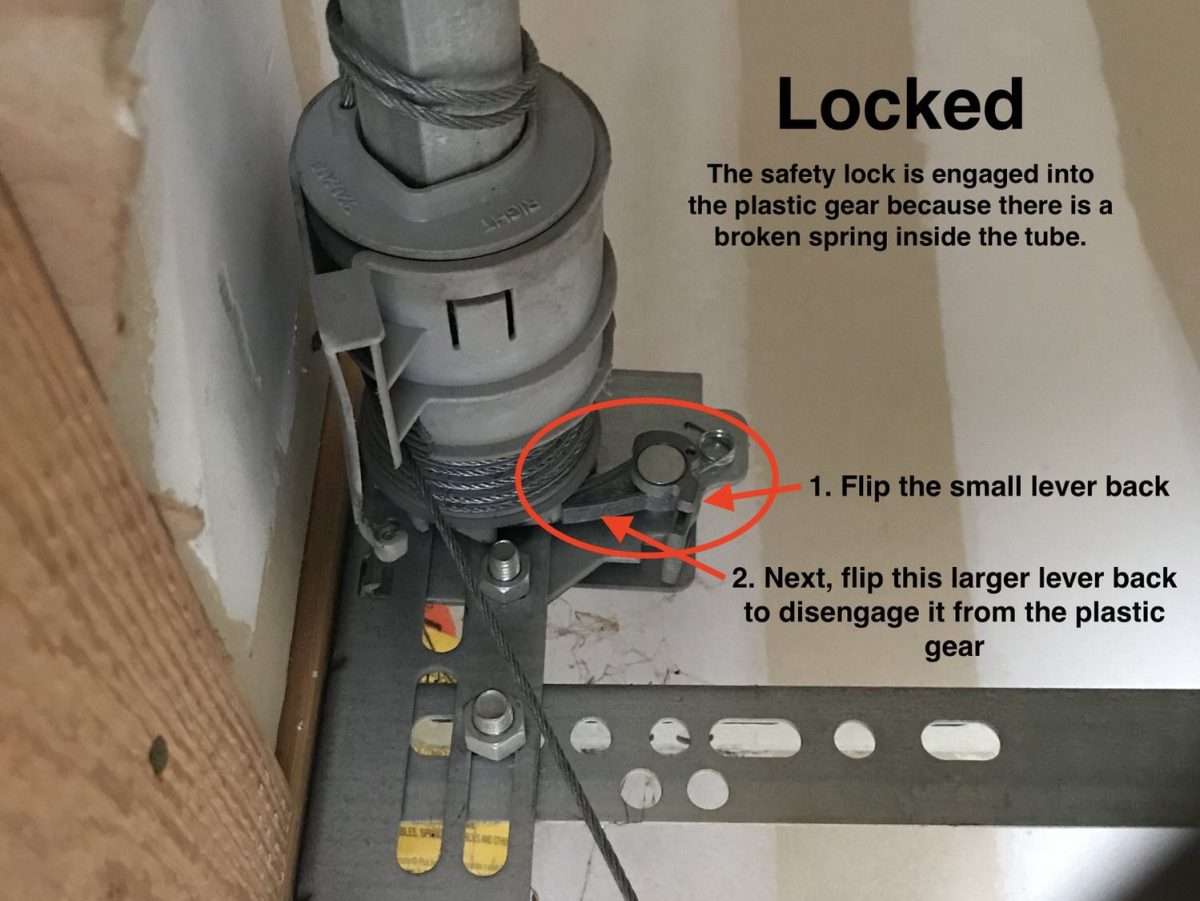
The clicking noise you heard as the garage door was going up was the lever contacting the gear on the plastic drum. Once the door fully opens, it locks itself in the up position. This is intentional, so the garage door doesn’t come down on a person. The problem with this is it seems to always happen late on a Friday, and you’re left with your garage door stuck open.
PRO TIP: Use Two People
If you follow the instructions in the photo above to get your garage door closed for the evening, make sure you have two people. One person needs to be holding the garage door in the up position while the other flips the lever back to disengage. Next, the garage door can safely be lowered by two people. In general, the weight will be around 60lbs to 90lbs, depending on the size of the door. Call a professional if you’re not comfortable dealing with this kind of issue.
Torsion Spring is Chattering
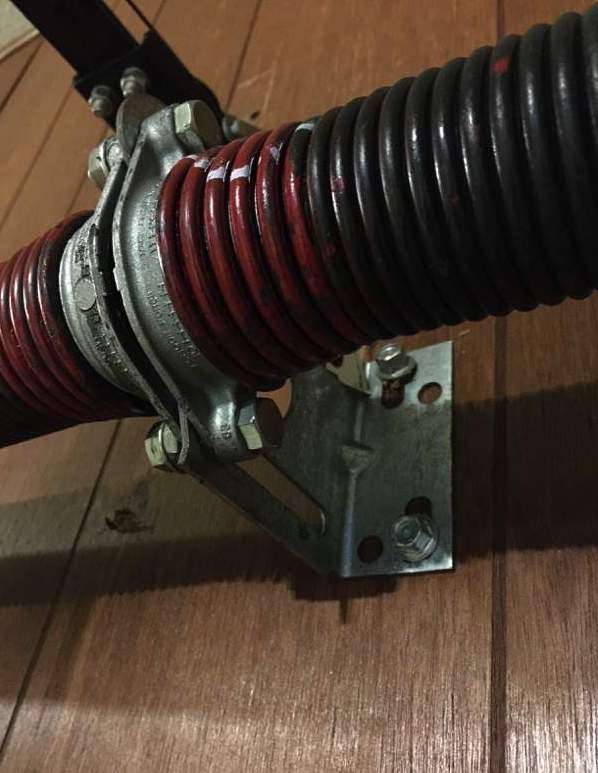
The way a torsion spring works to pull the weight of a garage door is one side is fixed on a spring pad and the other side rotates one full rotation for every foot height of the door. This rotation means the coils are rubbing together in operation. As dirt and grime accumulates on these coils, a torsion spring can start to get louder and chatter during a run cycle.
Spraying a good garage door lubricant or oil on the spring will help reduce friction with the metal coils rubbing together and quiet down the chatter. If that doesn’t work, you may need to call a garage door service company, so a technician can stretch the spring, which will help prevent the spring from binding during operation.
Garage Door Making Popping Noises
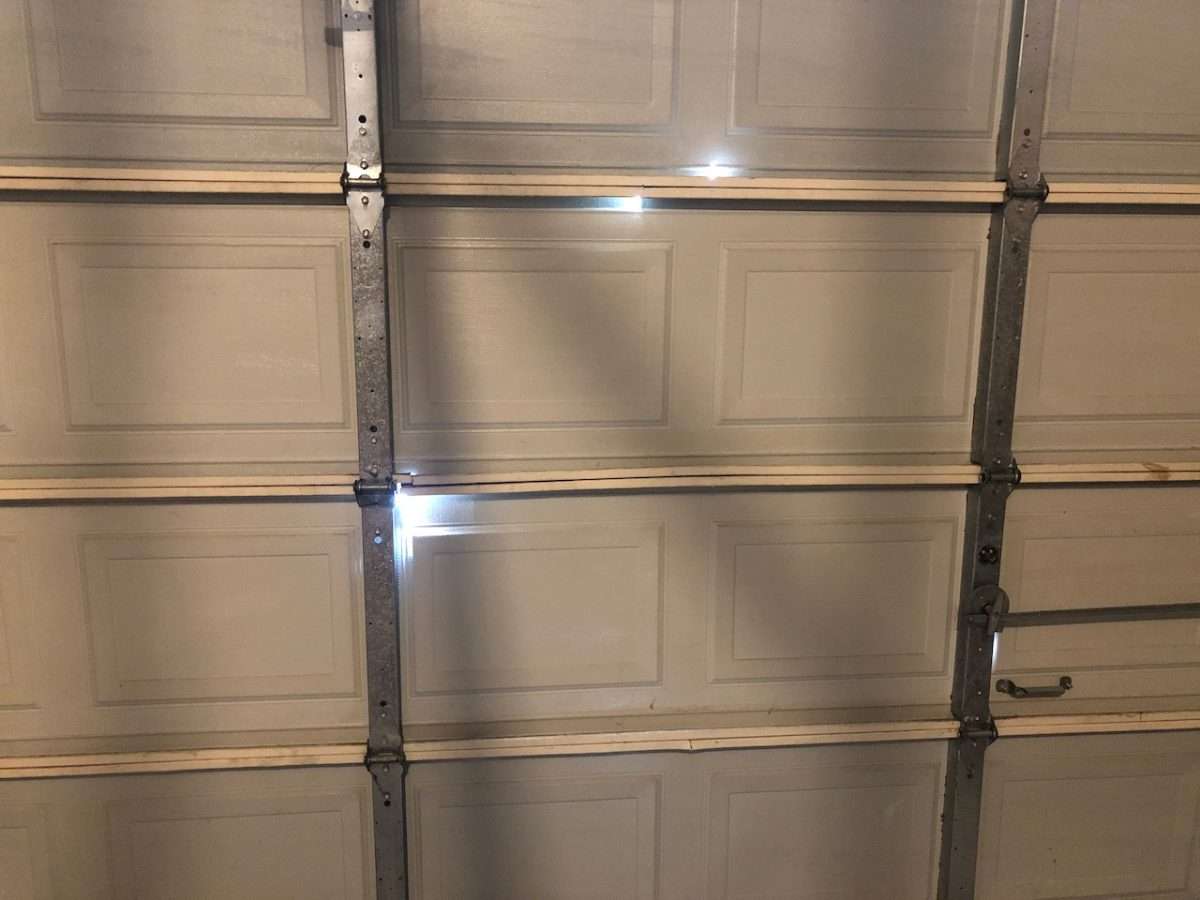
The most common reason for a garage door to make popping noises is if you have a cracked or weak section. A sagging garage door section will have to pop itself upwards when closing as it makes the radius on the track. The reason for this is because a section must be straight to properly make the turn of the radius.
Your garage door may be having this issue because it was hit by a vehicle, or it could be just normal wear and tear due to age. If your garage door is not in too bad of shape, ask your local garage door guy to install a reinforcement strut across the section, which can give you a few more years of life out of your door.
Broken Hinge Popping on the Garage Door
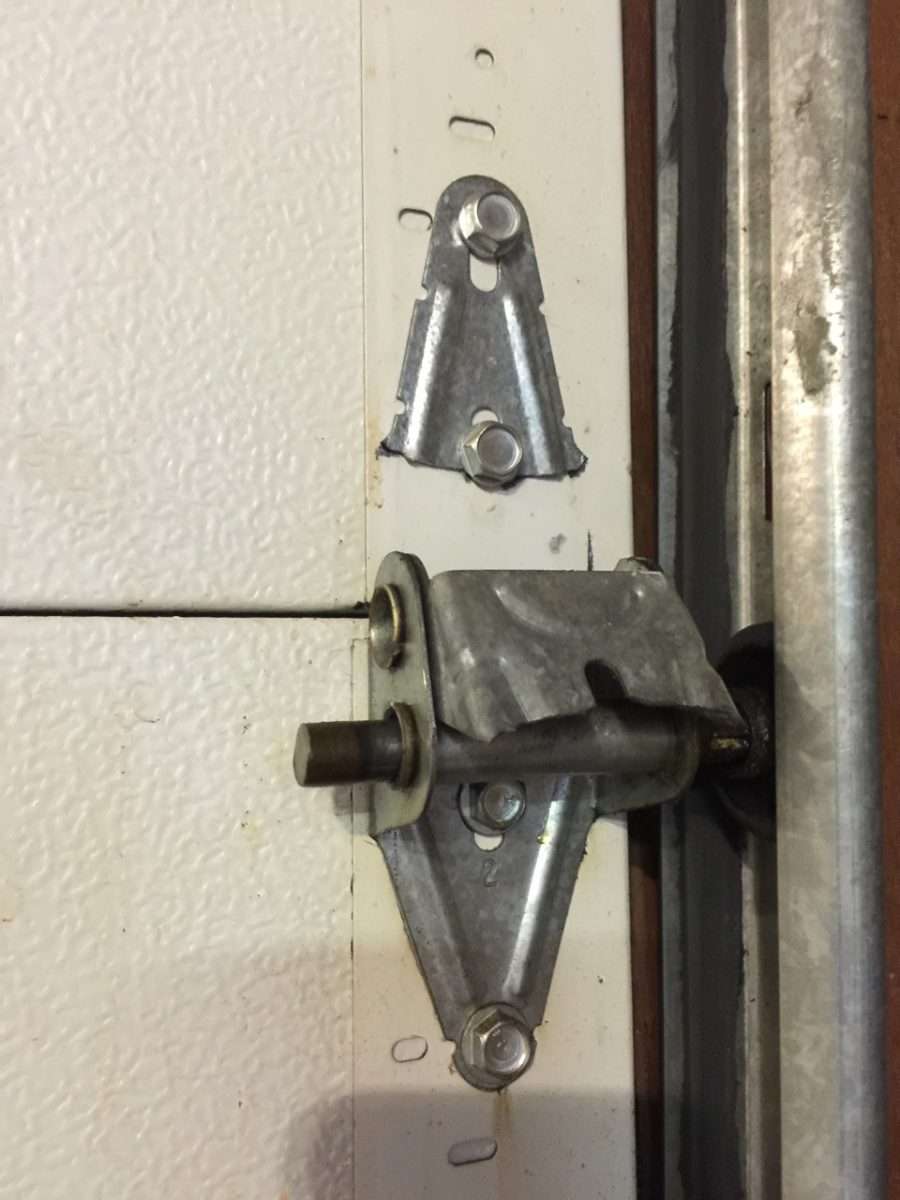
A broken hinge on a garage door can cause the sections to make a popping noise when closing due to misalignment of the section. There are fifteen hinges across the middle of a standard 16×7 garage door, along with two top roller brackets. A broken hinge or loose top roller bracket is very common in garage door repair.
Paint in Between the Garage Door Sections
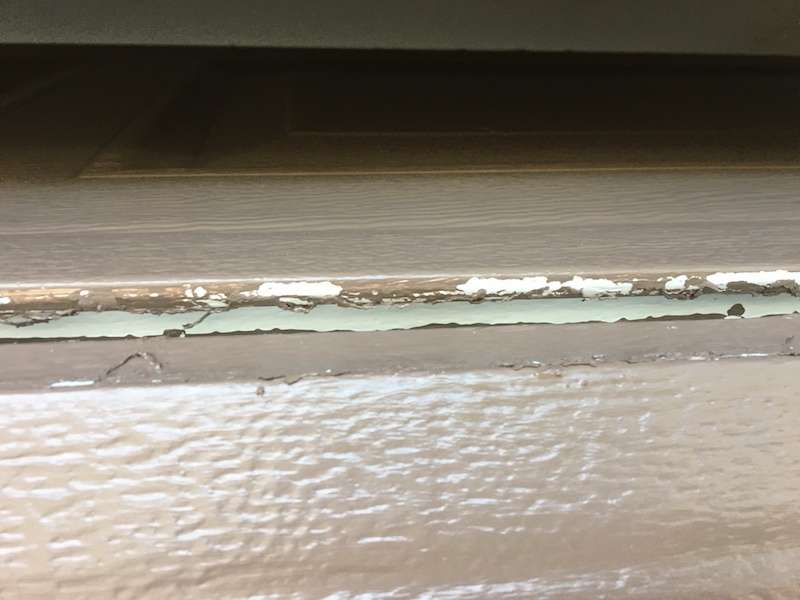
Believe it or not, there is a right way and a wrong way to paint a garage door. That is why we wrote an article on how to paint a metal garage door. If you hire someone to paint your garage door, make sure they only paint the door in the closed down position. The reason for this is you do not want paint in between the sections or behind the vinyl trim as it can wreak havoc on your garage door and automatic opener.
Because so much of the paint today is latex, it has the same properties as caulking. If you get paint in between the garage door sections and close your door for the night, the paint will set up like caulking and seal the sections together. When you wake up to open your garage door to go to work, you will hear loud popping noises as each section is trying to break the seal created by the paint.
This issue can be so bad, we have seen customers damage their new garage door because the automatic opener kept pulling, and the sections would not break apart when opened. This ended up bending the top section and strut, which ultimately cost the homeowner hundreds of dollars to have repaired on a brand-new door.
Weak Windsor Single Stile Garage Door
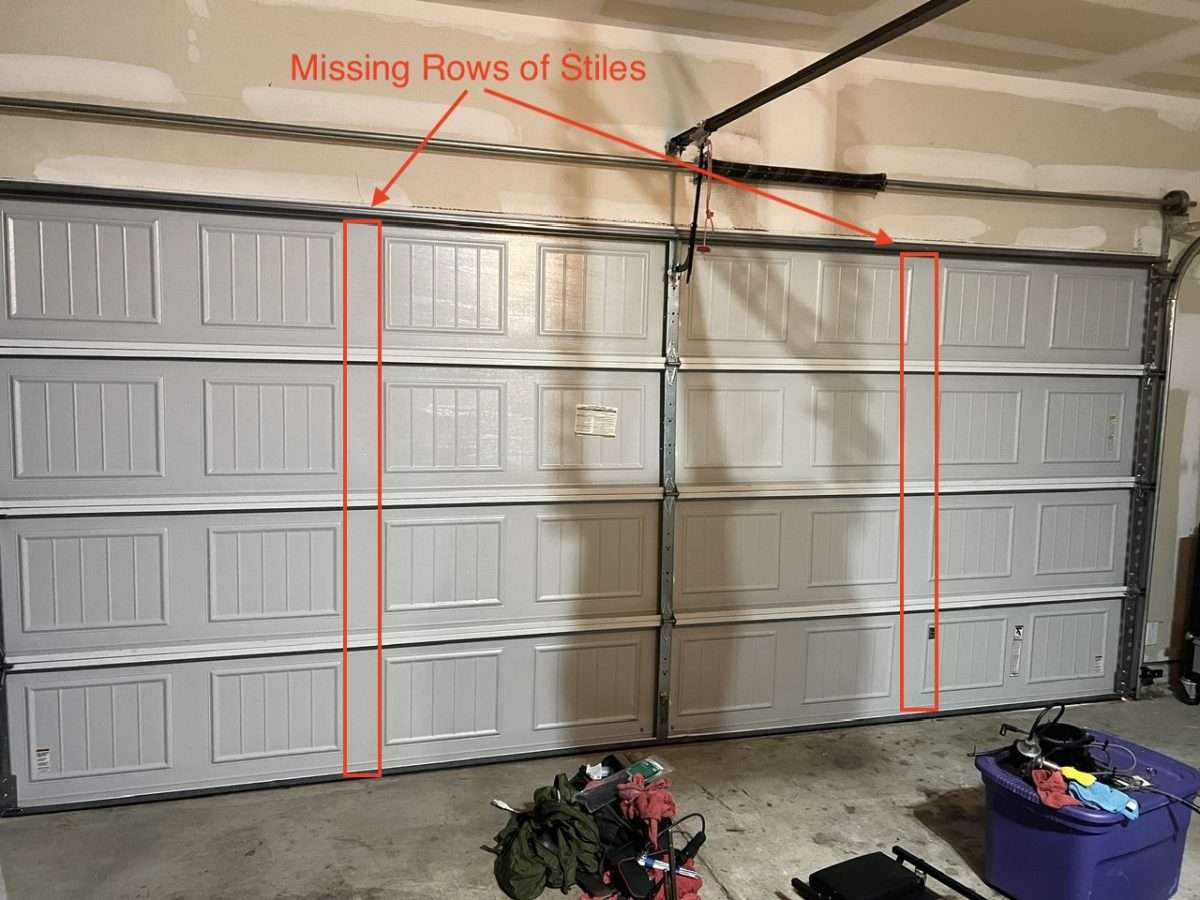
Because competition is so fierce among home builders in competitive markets, the need for cheaper products is on the rise. Windsor garage doors started catering to the builders by removing rows of stiles to reduce costs. The Windsor garage door pictured above is a “single stile” door, which means it only has a single row of metal stiles in the center of the door.
The distance from the center stile to the end stiles is 8ft on a standard 16×7 garage door. Because the span is so great, the sections on these doors will naturally be louder because the metal is flexing more during operation. Less reinforcement on the sections equals more flex and less alignment of the tongue and groove.
As a reference, a quality 16×7 garage door should have a row of vertical stiles spaced every 4ft, which has been the standard for years.
Top Roller Bracket is Grinding Against the Horizontal Track

One of the harder issues to diagnose and more annoying sounds in garage door repair is when the top roller bracket grinds against the horizontal track as the door opens and closes. This metal on metal sound is usually high-pitched and hurts the ears. There should be about an inch of space between the top roller bracket and the horizontal track when the garage door is in the up position. If not, the horizontal tracks may need to be widened due to the home shifting.
While you are addressing the top roller bracket, make sure the adjustment bolt is tight. It is common for this to come loose over time causing slack and eventually the roller will fall completely to the ground. Make sure this bracket is tight, so your top section doesn’t go off track.
Your Garage Door is Not Insulated
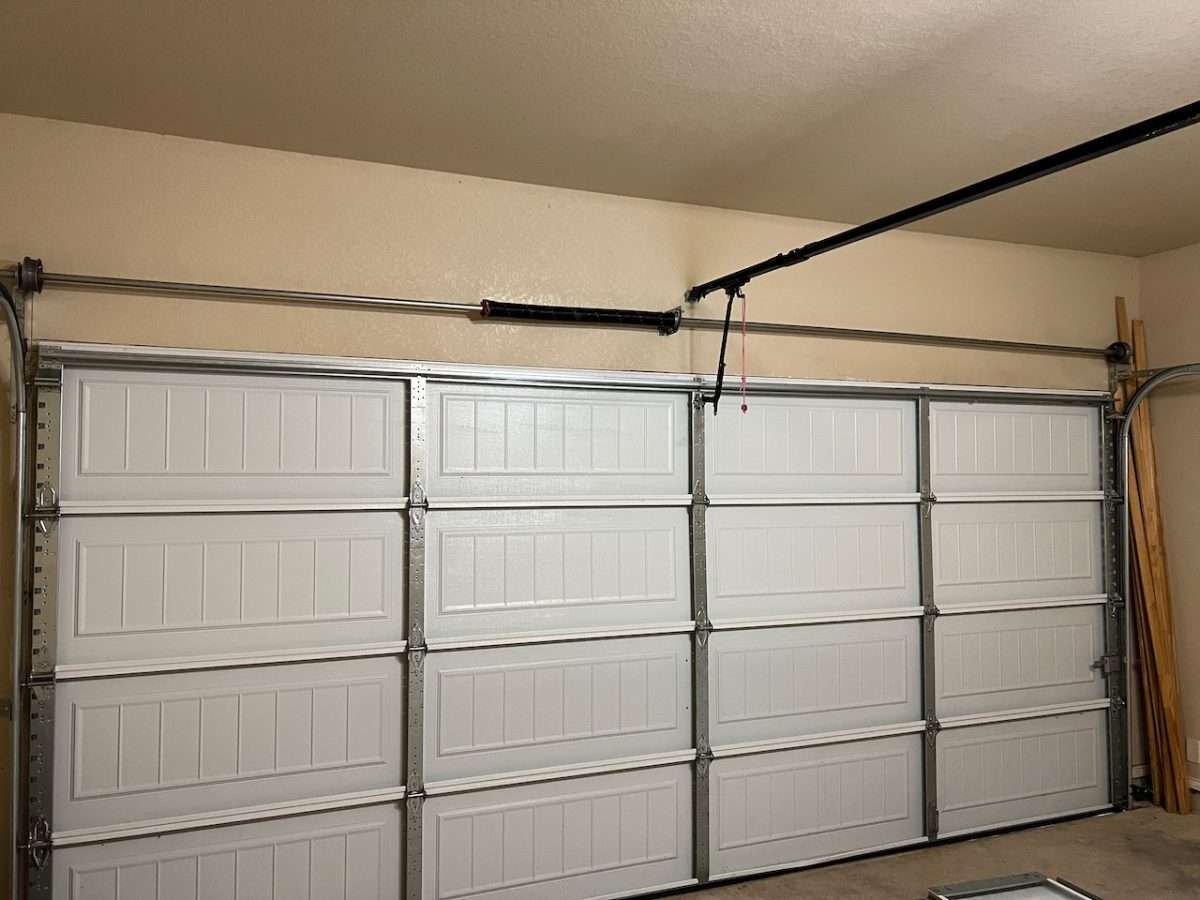
A standard non-insulated garage door is called a “hollow metal” or “pan door”. Some models tend to be louder since there is nothing to absorb the sound inside the sections during operation. If you are in the market for a new garage door, get a quote for a steel back insulated door.
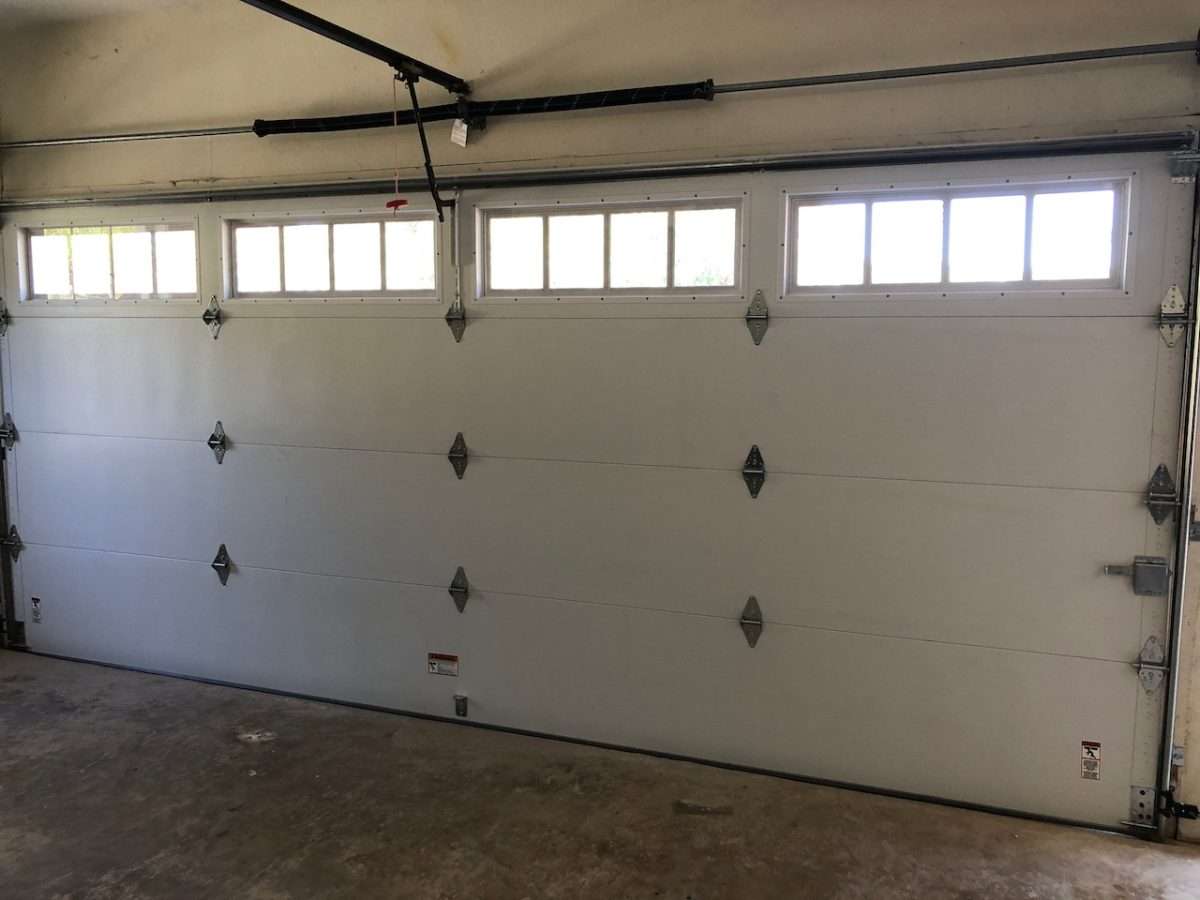
A steel back insulated garage door will give you the best sound absorption as the insulation is sandwiched between an inside and outside layer of metal. They also call this type of door a triple layer garage door. Polystyrene white foam is standard, but upgrading to the polyurethane yellow spray foam will add insulating value, strength, and additional sounds absorption.
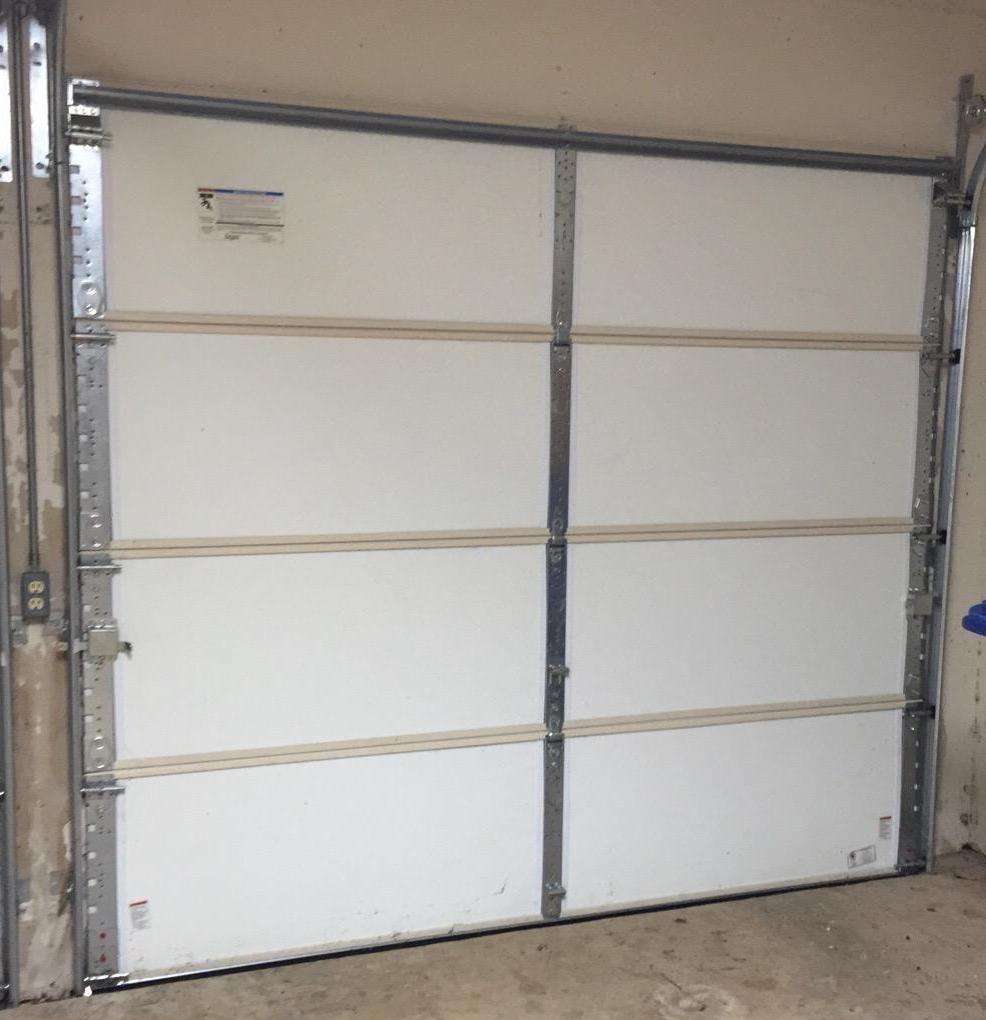
The vinyl back insulated garage door is a double layer option offered by most manufacturers. This model is less expensive than a steel back door because the insulation is exposed on the inside with a hard vinyl backer for protection.
Many people will choose this option for the cost savings, but some models can actually be louder because the insulation will move around inside the section as the garage door opens and closes. It’s not our first choice when it comes to insulated garage doors.
Noisy Garage Door Opener Motor
One of the quickest ways to find out if your garage door opener is making most of the noise is to disconnect your door from the opener using the red pull rope. This allows you to open and close your garage door manually to see how noisy it is during operation. If your garage door sounds fine, let’s discuss some common reasons why your opener may be noisy.
Loud Screw Drive Opener
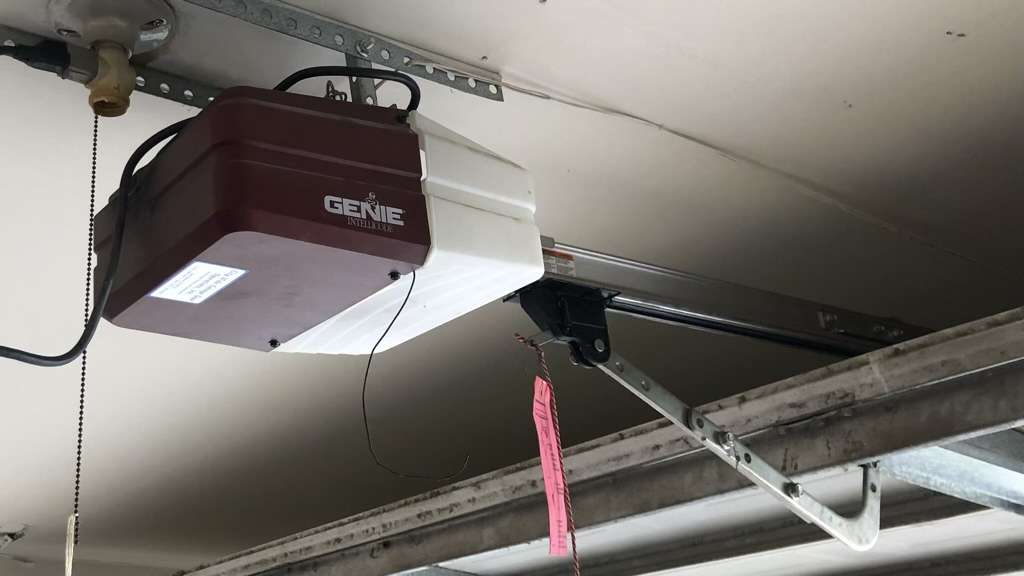
Some older Genie screw drive openers were extremely loud when the screw mechanism down the drive rail needed lubrication. The level of noise surprised us, but the homeowner did not know any different because the noise had increased slowly over time. If you have one of these openers, you need to apply some low-temperature grease into the screw drive rail, which will have a dramatic impact on the noise level.
AC Motor is Loud on Your Automatic Opener
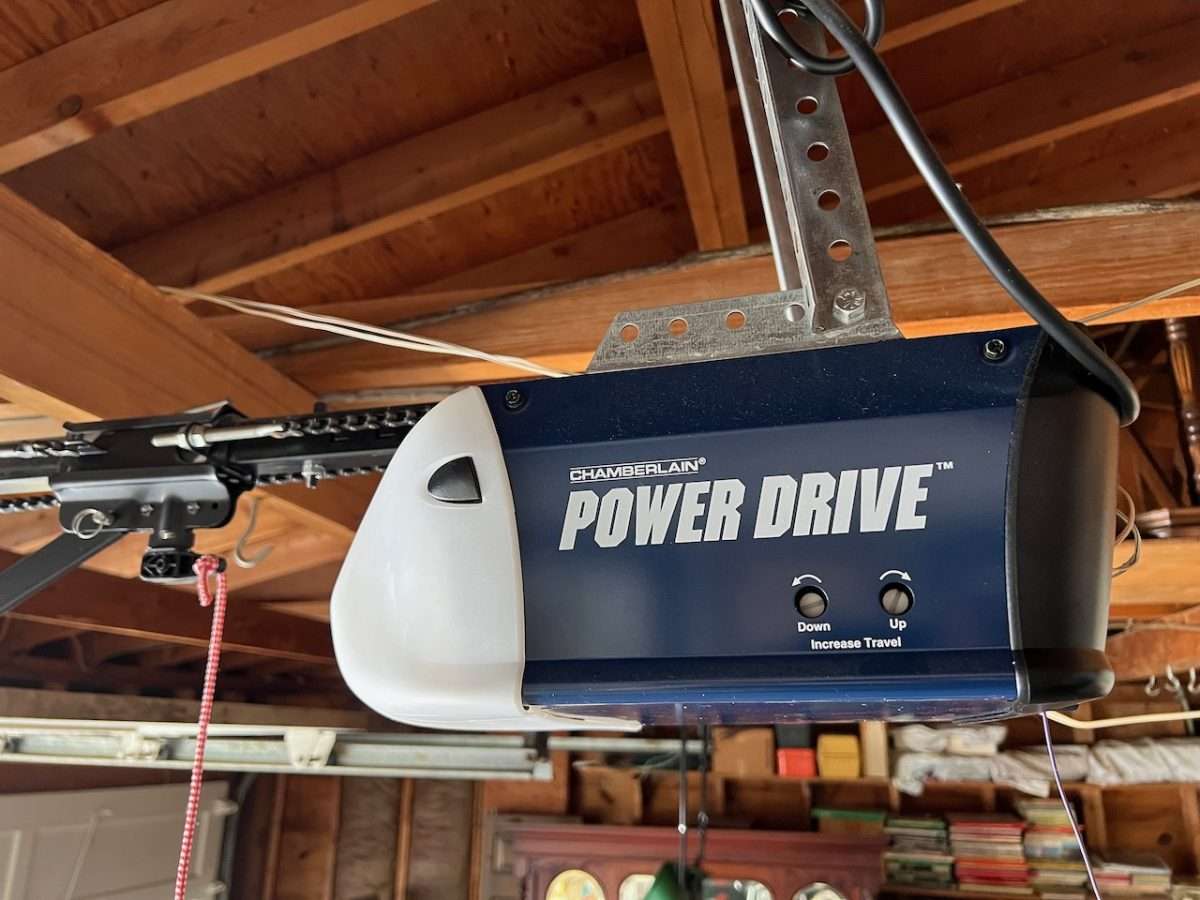
For years, garage door openers were only equipped with AC motors, which stands for “alternating current”. These motors are the larger traditional copper wound motors that are instant on and off and usually make a humming noise during operation. They are extremely reliable and have been proven to provide years of service.
The problem with loud openers equipped with AC motors wasn’t the motor, but how the housing was constructed and how vibration was controlled. Some manufacturers did a better job than others controlling the vibration and humming sounds, therefore resulting in a pleasing experience for the homeowner. Other units sounded like a freight train pulled into the garage.
If you have one of these loud units, you can have it replaced with a newer style opener featuring a DC or “direct current” motor. These new motors are not only quieter, most of them have a soft start and stop, which removes the abrupt “instant on” found with AC motors. One of our favorites that we install frequently is the LiftMaster 8160W garage door opener.
Chain Rattling on Garage Door Opener
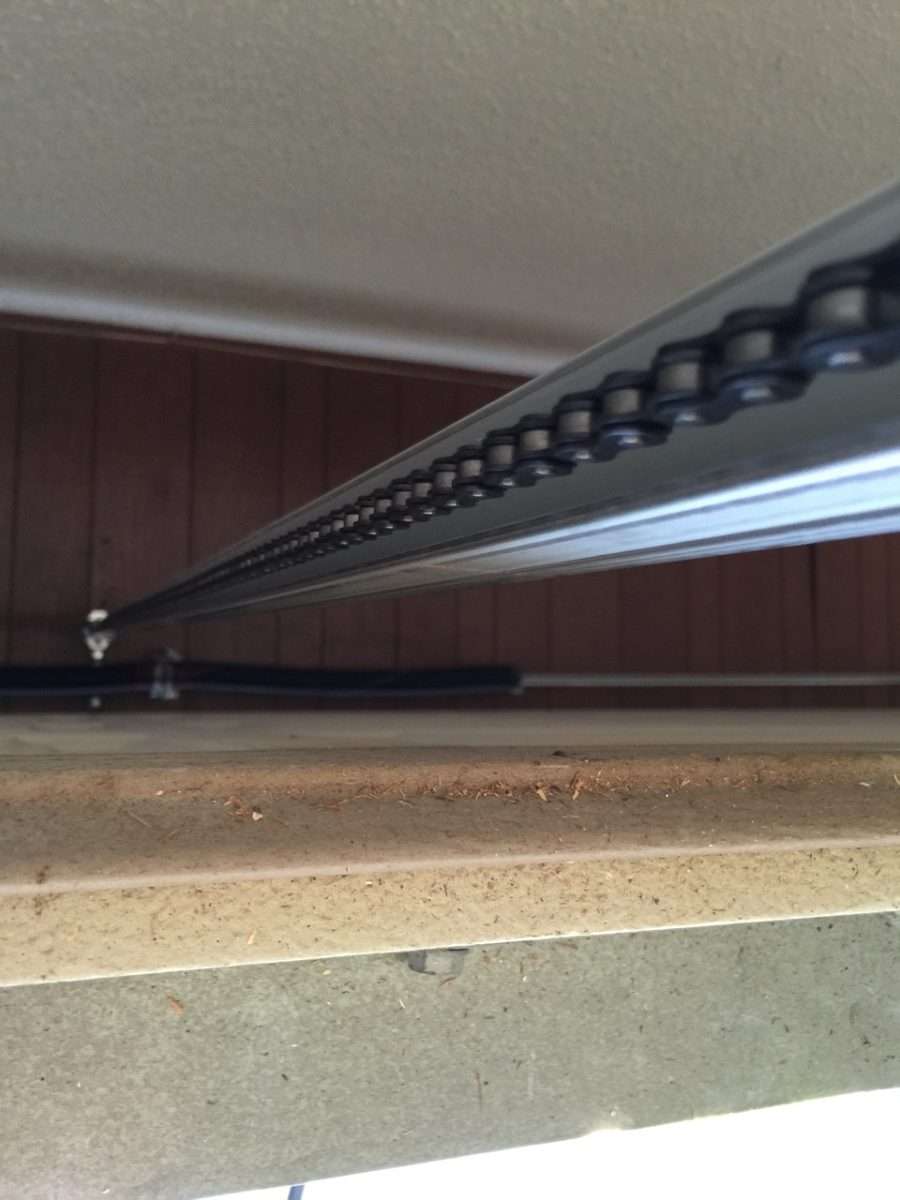
Chain rattle on garage door openers is why most homeowners always request a belt drive opener. This was more common in the past when AC motors had more vibration. Newer garage door openers with DC motors can be dead quiet using chains to drive the motor because the soft start and stop is so smooth.
A chain can rattle against the metal drive rail if it’s too loose or even if it’s too tight. When the chain is too loose, it has a tendency to slap against the rail, while a chain that is too tight can build up a type of harmonic vibration of sorts. We have found this to be an issue with some Linear LDCO800 openers we have installed in the past.
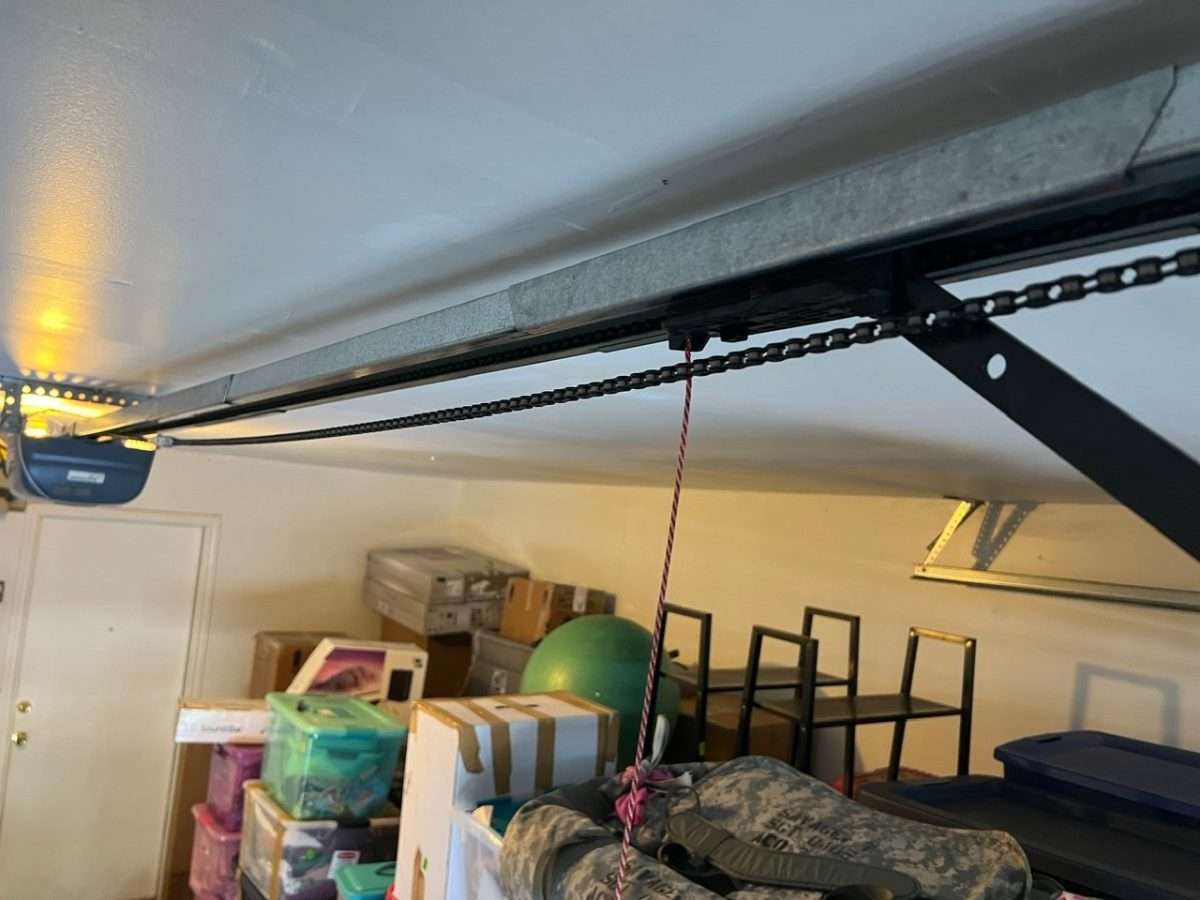
Genie garage door openers have been known to use box rails over the years on old and newer style openers. These box rails have a tendency to be louder when paired with a metal chain that is riding inside the rail. If you hear some noise on your Genie opener with a box rail, you may need to tighten the chain due to stretch.
Grinding Noise Coming From the Opener Motor
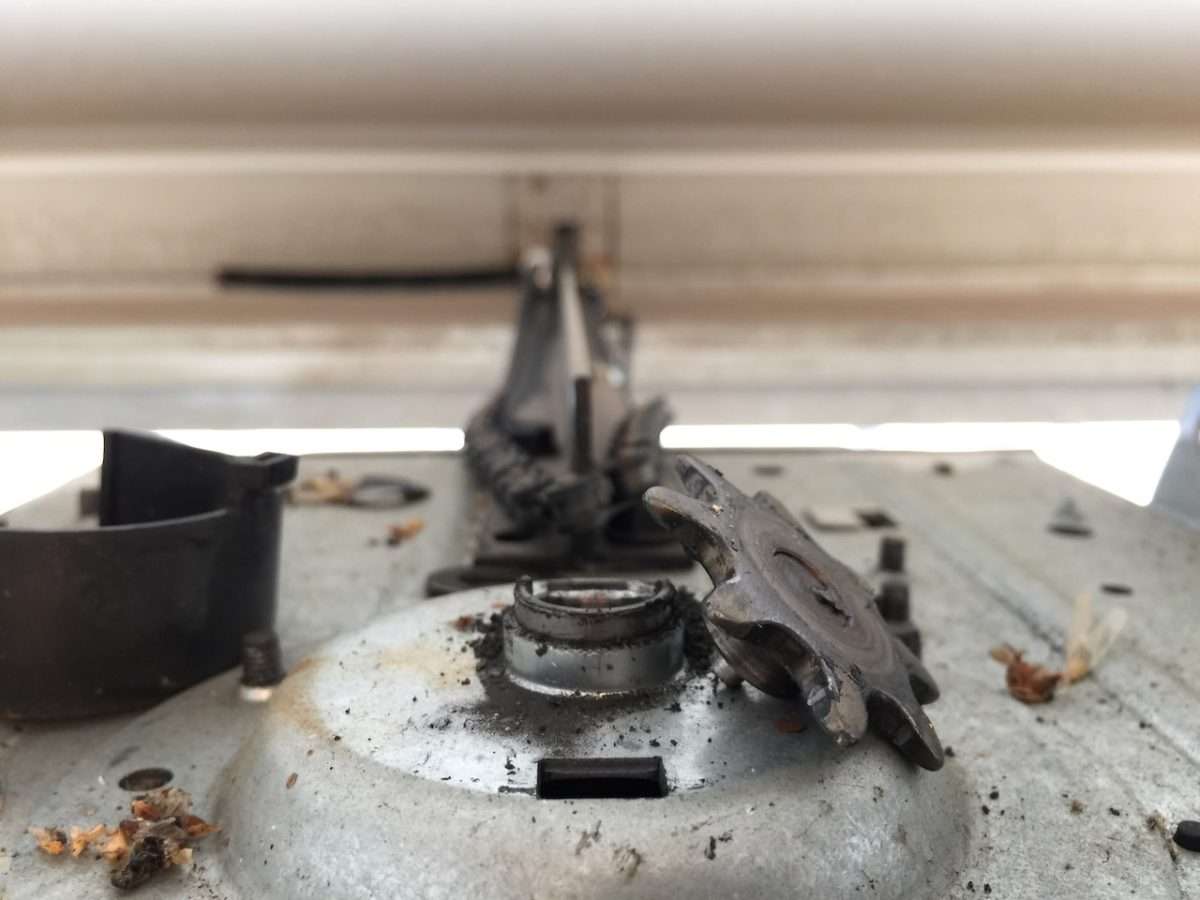
If your chain drive garage door opener is making a grinding noise or the chain has come completely off, you most likely have a stripped or broken top drive sprocket. This is common on most chain drive openers around the ten-year mark, and it’s just part of the regular wear and tear maintenance required when owning a home.
Belt Drive Opener is Squeaking
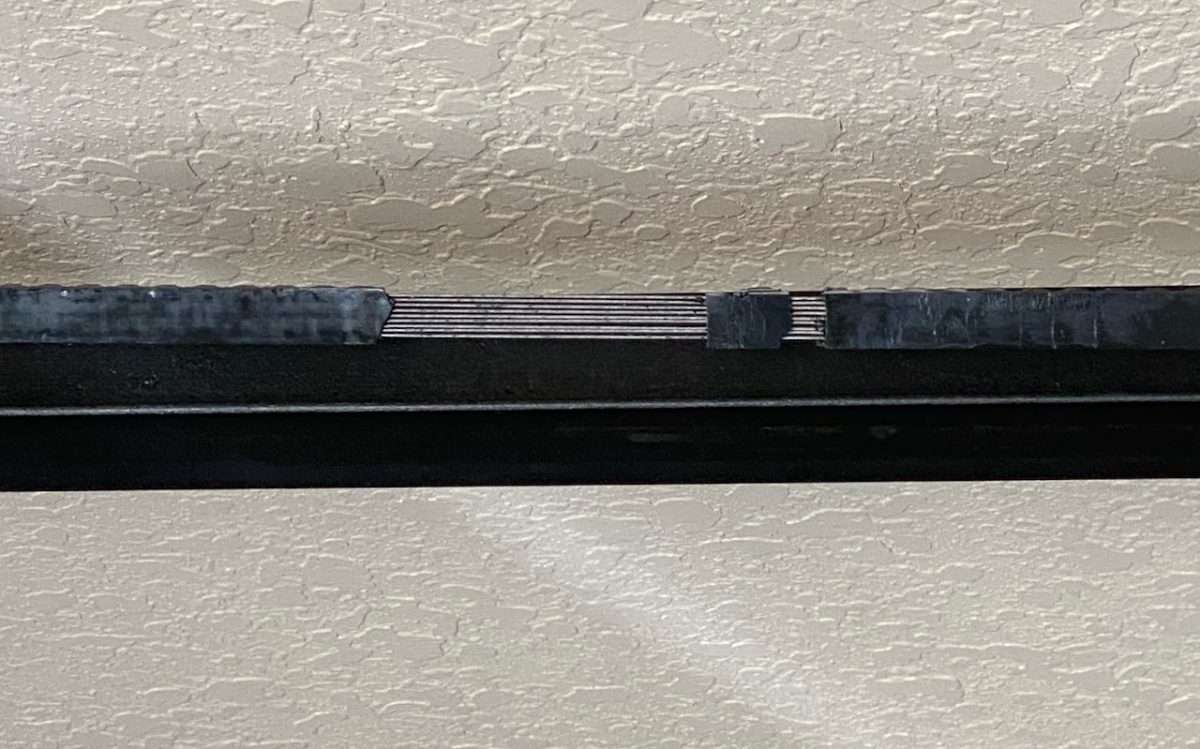
If you have a belt drive garage door opener that is squeaking or making unusual noises, grab a stepladder and inspect the drive belt. You most likely have a drive belt that is missing cogs (teeth) on the inside or the rubber may be completely gone, exposing the steel reinforcement. When this happens, the travel on your opener is usually out of adjustment, causing the door to go down too far or up too high when operated.
Beeping Noise Coming From the Opener
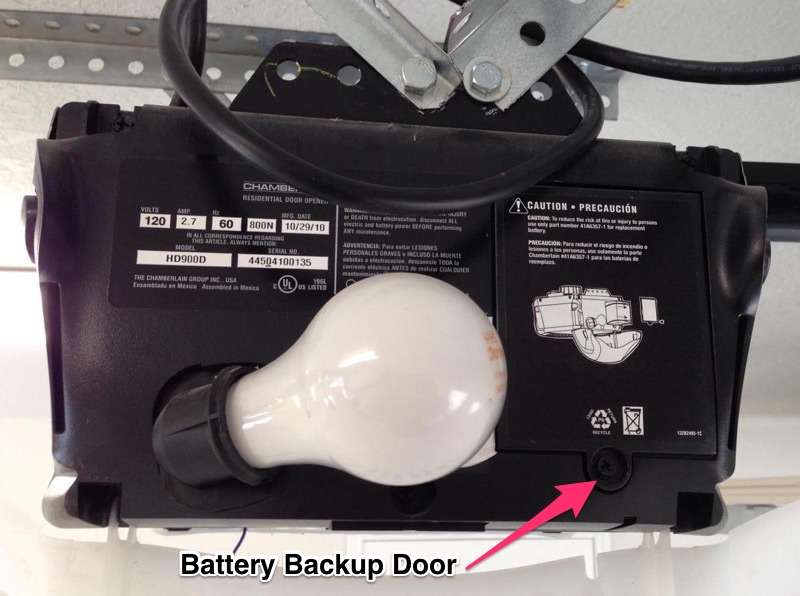
If your garage door opener is beeping, you most likely have an opener equipped with a battery backup. When a backup battery needs to be replaced, the opener will beep every so many seconds, alerting you that it’s time to replace the battery.
Most newer models feature a small door on the side of the motor, making it relatively simple to disconnect a couple of wires and install a new battery. If you would rather not replace the battery, you could always disconnect the wires to make the beeping go away and use the opener like you normally would. Please keep in mind that battery backups are now required in all homes in California, so you are required to replace them once they go out.
Some Homes are Louder
We have installed the same model of LiftMaster garage door opener on two different homes with two different outcomes when it comes to noise level. Both openers had the same amount of punched angle hanging from the ceiling. We have come to the conclusion that some homes are just louder due to how the ceiling joists are constructed.
Conclusion
Hopefully, the tips in this article will help you fix your noisy garage door. Being able to spot a simple issue could save you hundreds of dollars in service call fees and labor. If not, then it might be time to call a professional. A trained eye knows exactly what to look for when garage door noise starts to get out of control.
